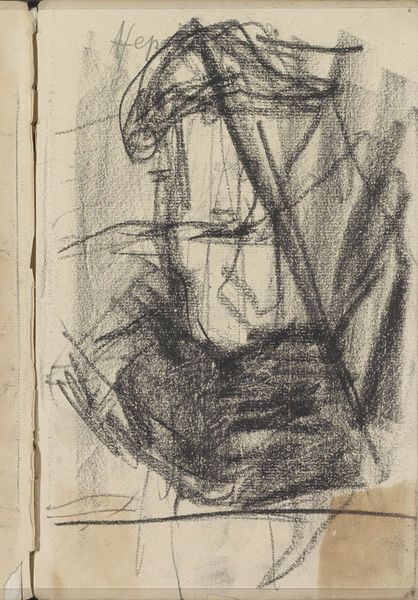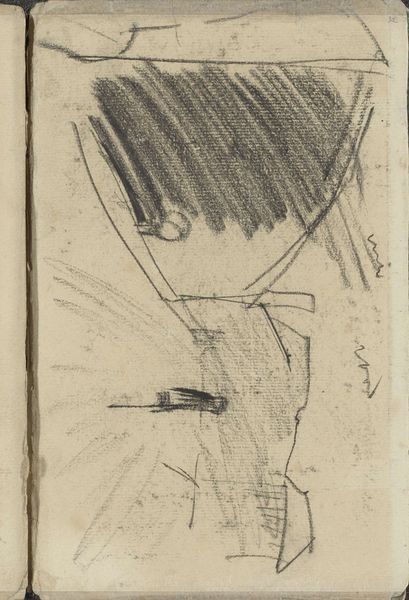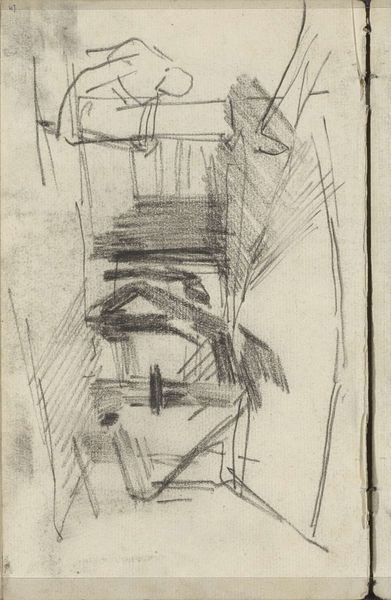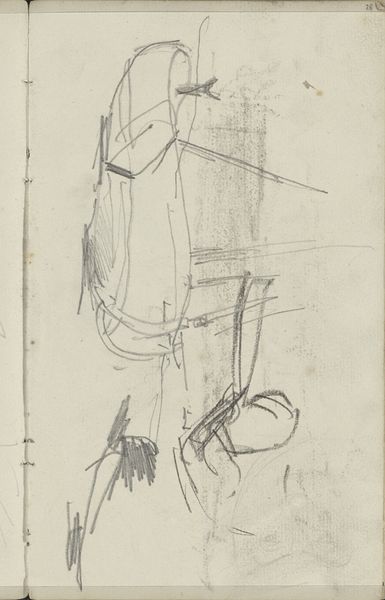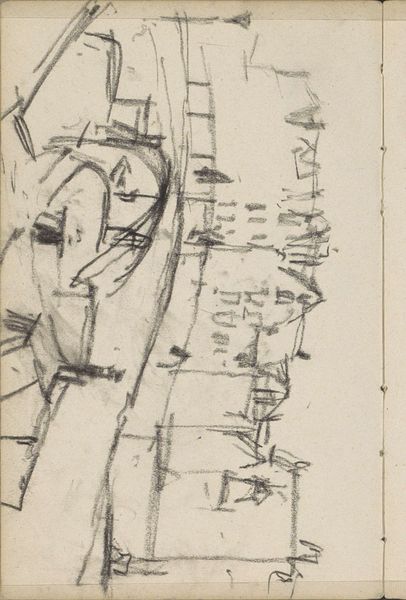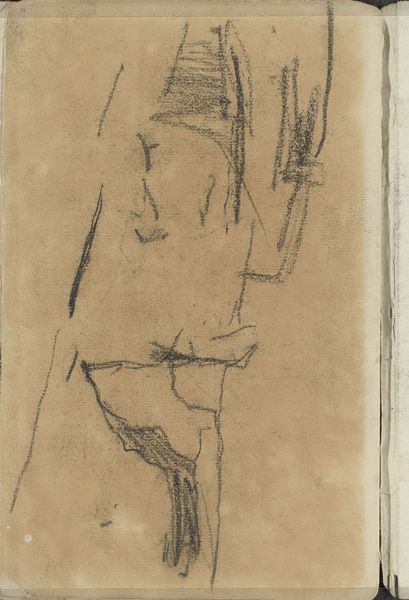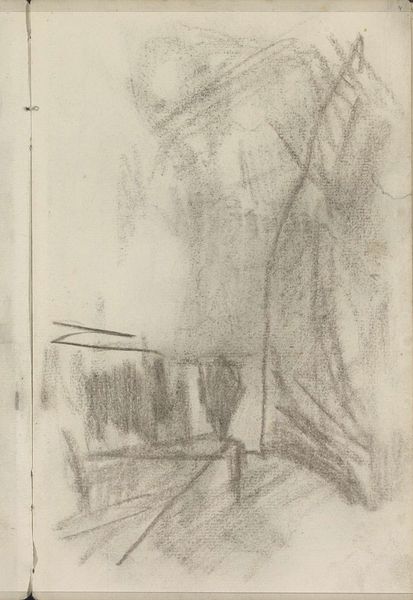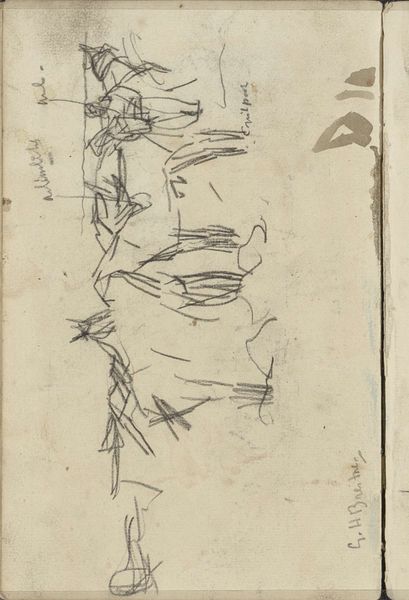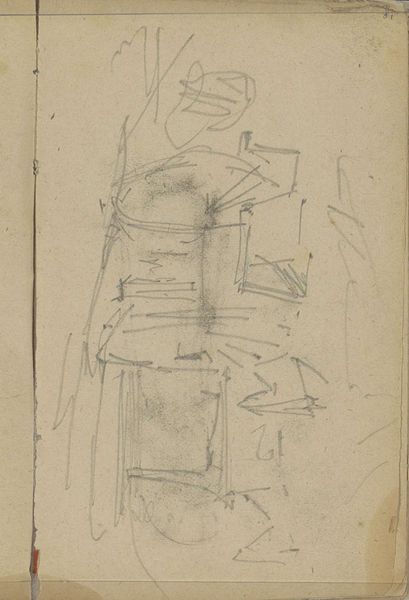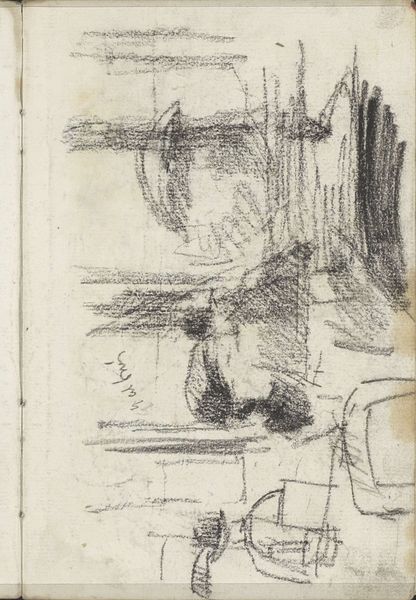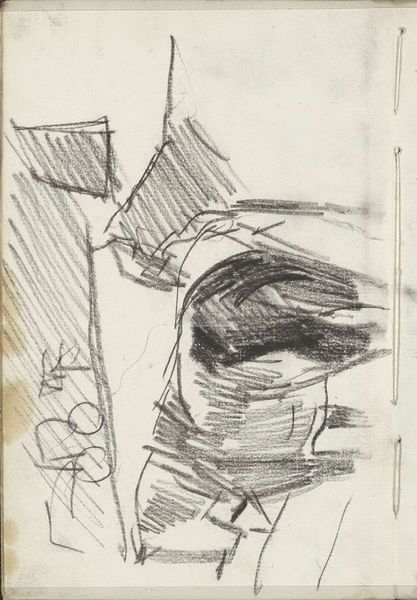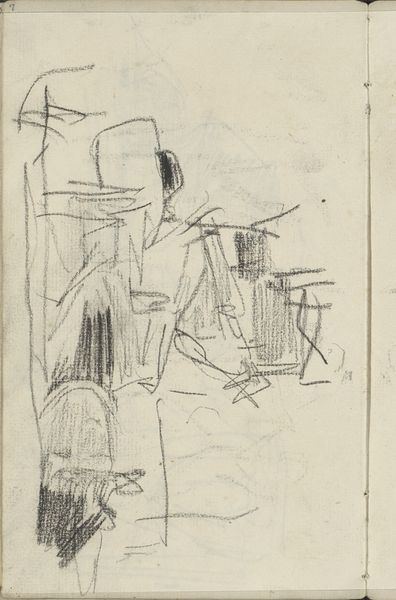
Copyright: Rijks Museum: Open Domain
Editor: Here we have Breitner’s "Stadsgezicht," a graphite drawing on paper, placing it sometime between 1886 and 1923. It feels very preliminary, almost like a glimpse into the artist’s raw thought process. What stands out to me is how the dense, almost aggressively applied graphite creates this heavy atmosphere, so unlike the light touch I often associate with landscapes. How would you approach this piece? Curator: For me, the interest lies precisely in that seemingly “preliminary” state. Breitner, as a product of his time, operated within a burgeoning art market, influenced by industrialized production. What appears "unfinished" isn't necessarily a lack of polish, but potentially a deliberate strategy. The roughness, the immediacy of graphite on paper, bypasses the laborious crafting of, say, an oil painting. It highlights the direct labor of the artist's hand. Editor: So you are suggesting he is perhaps intentionally rejecting traditional fine art labor? Curator: It's worth considering. The cityscape, a subject often romanticized, is here rendered with a kind of brutal honesty. We aren’t seeing the picturesque; we’re seeing marks, the materiality of the medium itself. It’s important to also ask how readily available was this paper, how was this graphite created and distributed? Breitner is also depicting urban space—which, from the late 19th to early 20th century onwards, transforms rapidly in scale and scope. Editor: It almost makes the drawing itself feel like a commodity. Curator: Precisely. By laying bare the materials and the immediacy of the act of drawing, he’s revealing the means of production itself, inviting us to consider not just what is depicted, but how it came to be, and how it will function within an emerging and transformative marketplace. Editor: That makes me see the sketch in a new light, not just a quick study, but a commentary on art-making itself in a changing world. Curator: Exactly. Looking at the means of production brings in a broader context. I have certainly learned something.
Comments
No comments
Be the first to comment and join the conversation on the ultimate creative platform.
